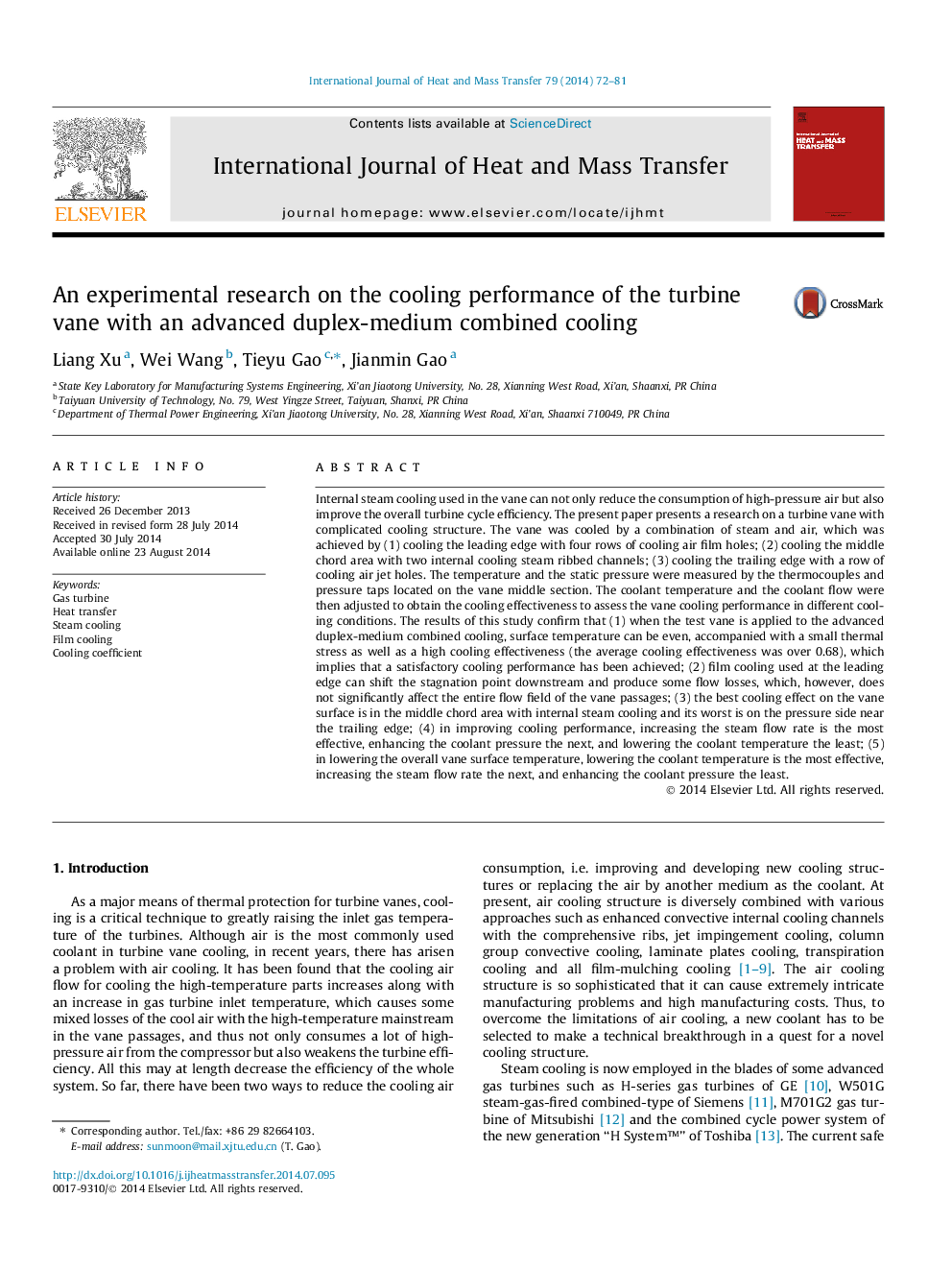| کد مقاله | کد نشریه | سال انتشار | مقاله انگلیسی | نسخه تمام متن |
|---|---|---|---|---|
| 657388 | 1458063 | 2014 | 10 صفحه PDF | دانلود رایگان |
عنوان انگلیسی مقاله ISI
An experimental research on the cooling performance of the turbine vane with an advanced duplex-medium combined cooling
دانلود مقاله + سفارش ترجمه
دانلود مقاله ISI انگلیسی
رایگان برای ایرانیان
کلمات کلیدی
موضوعات مرتبط
مهندسی و علوم پایه
مهندسی شیمی
جریان سیال و فرایندهای انتقال
پیش نمایش صفحه اول مقاله

چکیده انگلیسی
Internal steam cooling used in the vane can not only reduce the consumption of high-pressure air but also improve the overall turbine cycle efficiency. The present paper presents a research on a turbine vane with complicated cooling structure. The vane was cooled by a combination of steam and air, which was achieved by (1) cooling the leading edge with four rows of cooling air film holes; (2) cooling the middle chord area with two internal cooling steam ribbed channels; (3) cooling the trailing edge with a row of cooling air jet holes. The temperature and the static pressure were measured by the thermocouples and pressure taps located on the vane middle section. The coolant temperature and the coolant flow were then adjusted to obtain the cooling effectiveness to assess the vane cooling performance in different cooling conditions. The results of this study confirm that (1) when the test vane is applied to the advanced duplex-medium combined cooling, surface temperature can be even, accompanied with a small thermal stress as well as a high cooling effectiveness (the average cooling effectiveness was over 0.68), which implies that a satisfactory cooling performance has been achieved; (2) film cooling used at the leading edge can shift the stagnation point downstream and produce some flow losses, which, however, does not significantly affect the entire flow field of the vane passages; (3) the best cooling effect on the vane surface is in the middle chord area with internal steam cooling and its worst is on the pressure side near the trailing edge; (4) in improving cooling performance, increasing the steam flow rate is the most effective, enhancing the coolant pressure the next, and lowering the coolant temperature the least; (5) in lowering the overall vane surface temperature, lowering the coolant temperature is the most effective, increasing the steam flow rate the next, and enhancing the coolant pressure the least.
ناشر
Database: Elsevier - ScienceDirect (ساینس دایرکت)
Journal: International Journal of Heat and Mass Transfer - Volume 79, December 2014, Pages 72-81
Journal: International Journal of Heat and Mass Transfer - Volume 79, December 2014, Pages 72-81
نویسندگان
Liang Xu, Wei Wang, Tieyu Gao, Jianmin Gao,